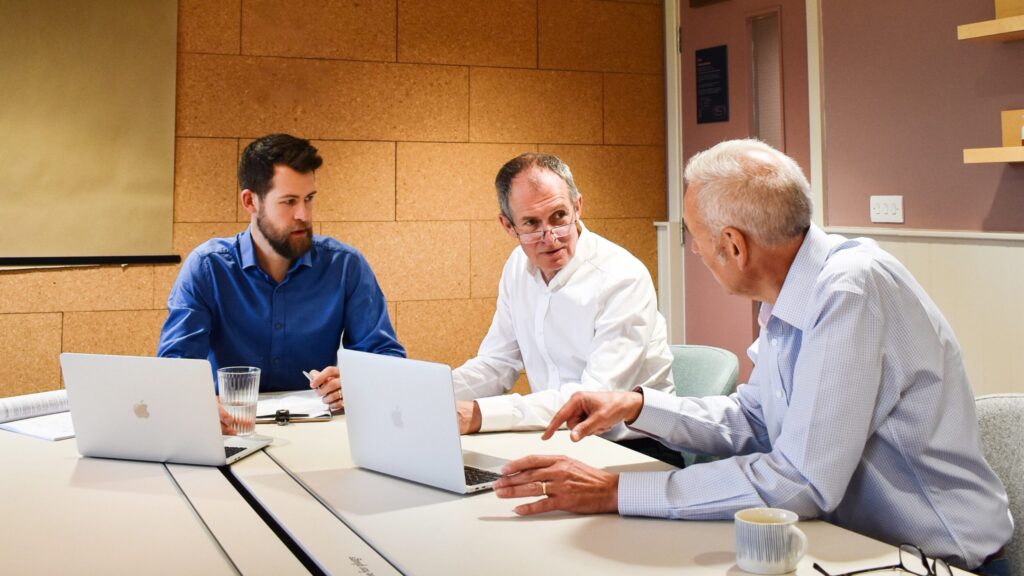As a machinery safety consultant, I get the opportunity to engage with a wide verity of industry, from agile start-up technology companies to heavily regulated energy providers and everything between. The talk over the past few months has regularly been about the shortage of engineering resource. This is a serious issue that is affecting everyone in industry.
Recently I had a customer say, “Tom, if you can manage the entire compliance process and you don’t talk to me once, then that’s success!”
In the landscape of engineering, the United Kingdom is facing a daunting challenge: a projected shortfall of 1 million engineers by 2030, as highlighted by recent research from strategy firm Stonehaven. This shortage poses a significant hurdle for industries reliant on engineering expertise, particularly in areas requiring engineering project delivery teams.
This is an issue that is not going to be a quick and easy fix. Many people are quick to look or jump to “educating the next generation” as the solution. Though this is vital, and I believe a big part of the solution jigsaw puzzle, we need to be thinking about other solutions, particularly those which can more immediately address the resource shortfall.
The more exciting situation that the resources shortage presents (and exposes) is that there is lots of work out there! Instead of viewing this as a problem to solve (which it is), we should be excited by all the work that is available and crying out to be completed! This changes the game; where companies used to compete tooth and nail for work, collaboration is a real option. I regularly talk with other machinery safety consultants (who historically would be major competitors) but are now open to sharing their experiences and often ask about sub-contracting work due to the market demand they are experiencing. This is a fantastic time to be working in the engineering space, with opportunity to deliver where there is demand and learn from others who are now very open to supporting people in businesses within the same market.
This is a great opportunity, in the face of this pressing issue, to explore innovative solutions emerging to address the scarcity of engineering resources. We are all experiencing this, so we need to be working together to resolve it.
I believe the key to this is identifying what your core skill and offering is. Then when you can see everything that is not core, work out how to outsource it…
One such solution gaining traction is the concept of integrated project teams. Integrated project teams involve the strategic use of subcontractors as integral members of a team to deliver projects or products efficiently. This approach represents a departure from traditional methods and offers a promising avenue for tackling the skills shortage head-on.
The idea behind integrated project teams is simple yet powerful: leveraging external expertise to complement internal capabilities. By assembling diverse teams with specialised skills, organisations can optimise resource allocation and enhance project outcomes. Rather than struggling to find new resources, integrated project teams enable individuals to focus on their strengths, thereby maximising efficiency and effectiveness.
For industries focused on project delivery, integrated project teams offer a particularly compelling solution. Specialist consultants can seamlessly integrate into project teams, providing invaluable expertise and alleviating pressure on internal resources. This collaborative approach ensures that critical project aspects are met while mitigating the impact of resource shortages.
Beyond integrated project teams, several other novel approaches can help address skills and resource shortages in engineering projects:
Collaborative Partnerships: Forming partnerships with other organisations or academic institutions allows for the sharing of expertise and resources, fostering innovation and efficiency.
Cross-Training and Upskilling: Investing in the development of existing team members through cross-training and upskilling initiatives helps bridge skills gaps and promotes a culture of continuous learning.
Standardisation: Standardising processes and procedures streamlines project delivery and reduces the need for specialised skills, enabling teams to work more efficiently.
Utilising New Technologies: Embracing advancements in technology, such as artificial intelligence and automation, can augment human capabilities and improve project outcomes while minimizing reliance on scarce resources.
Agile Project Management: Adopting agile methodologies allows teams to adapt to changing circumstances and prioritise tasks based on available resources, ensuring projects stay on track despite resource constraints.
By embracing these innovative approaches, organisations can navigate the challenges posed by engineering resource shortages and deliver successful projects in compliance with industry standards. As we look to the future, it is clear that collaboration, innovation, and adaptability will be key drivers of success in the engineering landscape. Together, we can overcome the resource shortfall and pave the way for a more resilient and sustainable future.



